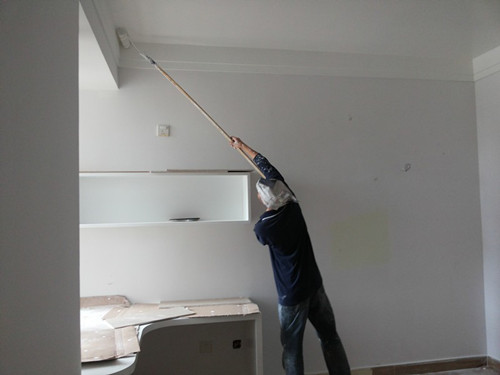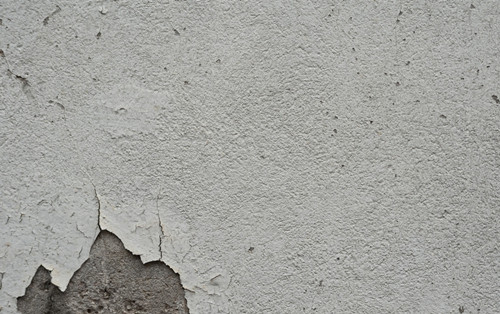The family's wall is very important, it will directly affect the appearance of the wall, the entire wall looks clean and tidy and people look very comfortable, but life will inevitably bump bump, or because of some natural causes damage, then How to repair a damaged wall? Next, Xiao Bian will introduce the method of repairing the wall bump and the daily maintenance of the wall.

Wall bump repair method
1, wall repair
A. Solve the water seepage first, then (remove the wall from the skin, breakage) to the cement layer, after drying, you can first brush a strong insulation sealer to separate water vapor, and dry it according to B after the next day.
B. Bump the small hole in the wall (first use a shovel to remove the damaged wall surface from the skin, empty drum, gray block, and wipe clean dust; dig an appropriate amount of wall repair cream; directly apply the repair cream Treat the damaged wall surface; grind the dried repair paste; wipe the dust after the repair paste is polished; use the wall repair paint to make the final modification)
2, wall anti-alkali
Firstly use oxalic acid brush to synthesize on the wall surface, then clean it up, first brush a layer of insulating sealant against alkali, and construct according to (B)
3, moldy wall
Use mildew remover to remove surface mold, dry it, and then use makeup wall paint (plus 20% water) to mix and brush again: whitening, beautiful wall surface.
4, wall moisture
The wall surface can be coated with anti-mildew agent, or the isolation sealant can separate water vapor. If the putty layer can absorb water, it can be sprayed and sprayed with waterproof spray to achieve waterproof.

Daily maintenance of the wall
1, the principle of wall cleaning
When vacuum cleaning the wall wallpaper, be careful to change the vacuum cleaner to suck the head, usually if you find that the wall surface has to be erased in time. In addition, when we clean the walls, we must pay attention to the different cleaning methods for the water-resistant and non-water-resistant walls. For water resistant walls, we can use water for scrubbing, wipe clean and dry with a dry towel; for water-resistant walls, we can use a rubber wipe or wipe with a towel and wipe with a few clean liquids. In short, the dirt on the wall should be cleared in time, otherwise it will leave permanent marks for a long time.
2, the principle of wall maintenance
Because there are few wall frictions, mainly dust and water droplets are splashed. Therefore, there is a difference between the maintenance of the wall and the maintenance of the ground, which cannot be treated in the same way. In general, the maintenance of the wall surface is to wipe off the surface floating dust every day, and regularly use wax water for maintenance. Spray wax water has both cleaning effect and transparent protective film on the surface, which is more convenient and regular cleaning. As for the wall of the bathroom, it should be cleaned regularly with alkaline cleaners. After washing, it must be washed with water, otherwise it will make the surface dull.
3, expert tips
There are many types of wall decoration materials, including wallpaper, wall coverings, plastics, wood, and paint. Therefore, when we decorate the wall, we must fully consider the living environment and other factors, use the most appropriate materials to beautify the wall surface. In addition, in the cleaning and maintenance of the wall, we must first understand the characteristics of various materials, and targeted use of reasonable cleaning and maintenance methods, so as to ensure the gloss of the wall as new, extending its service life, Really save money for yourself.
Editor's summary: About the wall bump repair method and the daily maintenance of the wall is introduced here, I hope to be helpful to everyone. If you want to know more about yourself, you can follow the information on this site.
Living room glass partition wall loft bedroom partition wall model sofa wall background wall wall shelf wall switch brand wall bump repair
Dye is an organic substance that enables the coloring of fibers and other materials. Dye a wide range, according to the source can be divided into natural dyes (such as plant dyes, animal dyes and mineral dyes, etc.) and synthetic dyes (or artificial dyes). According to the molecular structure can be divided into azo dyes, anthraquinone dyes, phthalocyanine dyes, aromatic methane dyes, nitro dyes and so on. According to the application method is divided into acid dyes, alkaline dyes, sulfur dyes, reactive dyes, disperse dyes, direct dyes and so on. Dye has a color, but the color of the material is not necessarily a dye. Dyes must have chromophores and help chromophores. The dye in the ink should also have a water-soluble group such as a sulfonic acid group.
Natural dyes are dyes obtained from animals, plants and minerals. According to the source can be divided into: â‘ plant dyes, from some plants roots, stems, leaves and fruits extracted from the dye, such as extracted from indigo indigo (blue), extracted from turmeric curcumin (yellow (Dinar), etc.); (d) dyes, extracts from the animal's body, such as carmine extracted from the cochineal, etc .; (d) mineral dyes, dyes extracted from the colored non-ferrous minerals of minerals , Such as chrome yellow, ultramarine, manganese brown and so on. Because of the natural dyes and artificial dyes compared to the existence of many shortcomings, such as incomplete chromatography, application inconvenience, poor fastness, in addition to a few still use, the majority was eliminated.
Synthetic dyes, also known as "artificial dyes". Mainly by the coal tar (or oil processing) fractionation products (such as benzene, naphthalene, anthracene, carbazole, etc.) by chemical processing, sometimes called coal tar dyes. As the first few kinds of synthetic dyes made of aniline as raw materials, it is also known as "aniline dye." Compared with natural dyes, synthetic dyes and more types, chromatography complete, most colorful, washable and durable, and can be mass production. So the current so-called dye almost all refers to synthetic dyes. The dyeing products are one of the common forensic materials.
Pigment is a colored, black, white or fluorescent particulate organic or inorganic solid. In water, oil or other application medium does not dissolve, but can be evenly dispersed, and in the entire dispersion process from the physical and chemical effects of the media, still retain its unique crystal or particle structure. According to the chemical composition of inorganic pigments and organic pigments; according to the color is divided into white, red, yellow, black and other pigments; according to the source is divided into natural and synthetic pigments, natural pigments are mineral (inorganic) such as He Shi, cinnabar, , Realgar, etc., there are animal and plant (organic) such as rattan, cochineal red, synthetic pigments are also inorganic and organic two categories; according to the use of coloring pigments, physical pigments and functional pigments. Coloring pigments are inorganic and organic pigments that impart various colors to the application medium. The pigment is a pigment that does not have a hue force and no hiding power. It is mainly used to reduce product cost and improve the performance of paint, plastic, rubber and other products. Called the filler. Now has been processed into ultra-fine grain of natural products and synthetic products, due to the synthesis of impurities in the small, fine particles and according to the need for artificial synthesis and a variety of surface modification, it can be used to reduce the hiding power of the pigment (Such as titanium dioxide) and improve product performance, and now it is called physical (incremental) pigments more appropriate, most of the main varieties of natural pigments are processed natural minerals such as natural calcium carbonate, barite powder, talc Such as precipitated calcium carbonate, precipitated barium sulfate, synthetic silica, etc .; functional pigments are pigments that give products specific functions, And change the color of the temperature paint, with poisonous biological function of the antifouling pigments, in the dark glowing luminous pigments, to prevent corrosion of rust-proof paint, pearl luster pearlescent pigments and so on.
Paint in paint, printing, rubber, plastics, paper, fiber, ceramics and other industries widely used, the product can be decorative, opaque, durable or special features.
Dyestuffs And Pigments,Chinese Herb Extracts,As Acid Dyes,Stabilizer Of Plastic Products
SHANDONG ZHISHANG CHEMICAL CO.LTD , https://www.zhishangchemical.com